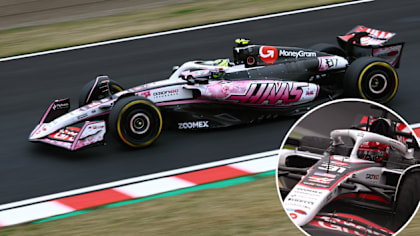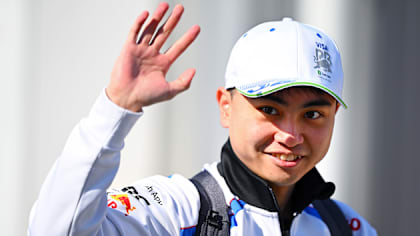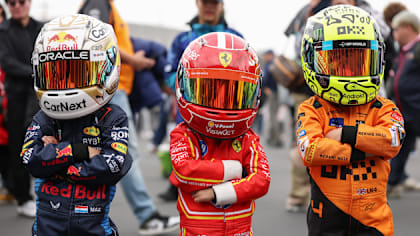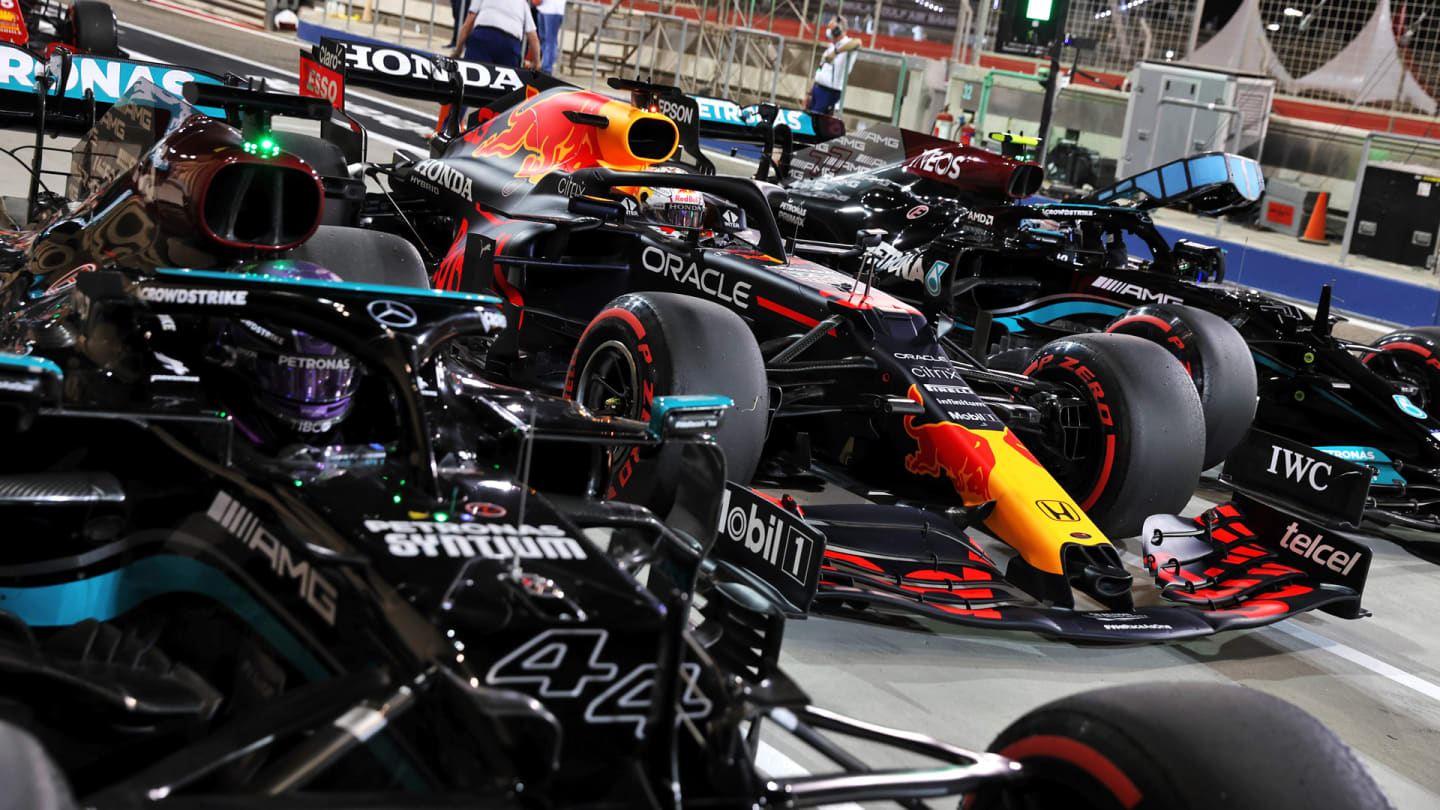
11 - 13 April
Feature
STRATEGY GUIDE: What are the possible race strategies for the Bahrain Grand Prix?

Share

As a new Formula 1 season gets underway in Bahrain, here’s a look at the strategic options that are available to the grid in today’s race at Sakhir.
What are the likely strategies for the frontrunners?
The heat and abrasive nature of the track surface in Bahrain often makes this race a tough one for the teams strategically, with a two-stop strategy the preferred option. Aiming for one-stop is particularly tough due to the high levels of degradation over 57 laps, and if the rear tyres overheat you’re going to be really struggling on the three straights – out of Turn 3, Turn 9 and the final corner – that feature DRS zones.
READ MORE: Verstappen says 'great winter' from Honda key to dominant Bahrain GP pole
That’s why we saw the majority of the frontrunners trying to qualify on the medium tyre during Q2, in order to start on the harder compound and have a longer opening stint. Max Verstappen, Lewis Hamilton, Valtteri Bottas and Pierre Gasly were the only drivers to manage it, while Sergio Perez and Yuki Tsunoda failed to make it through to Q3 as a result of trying the same.
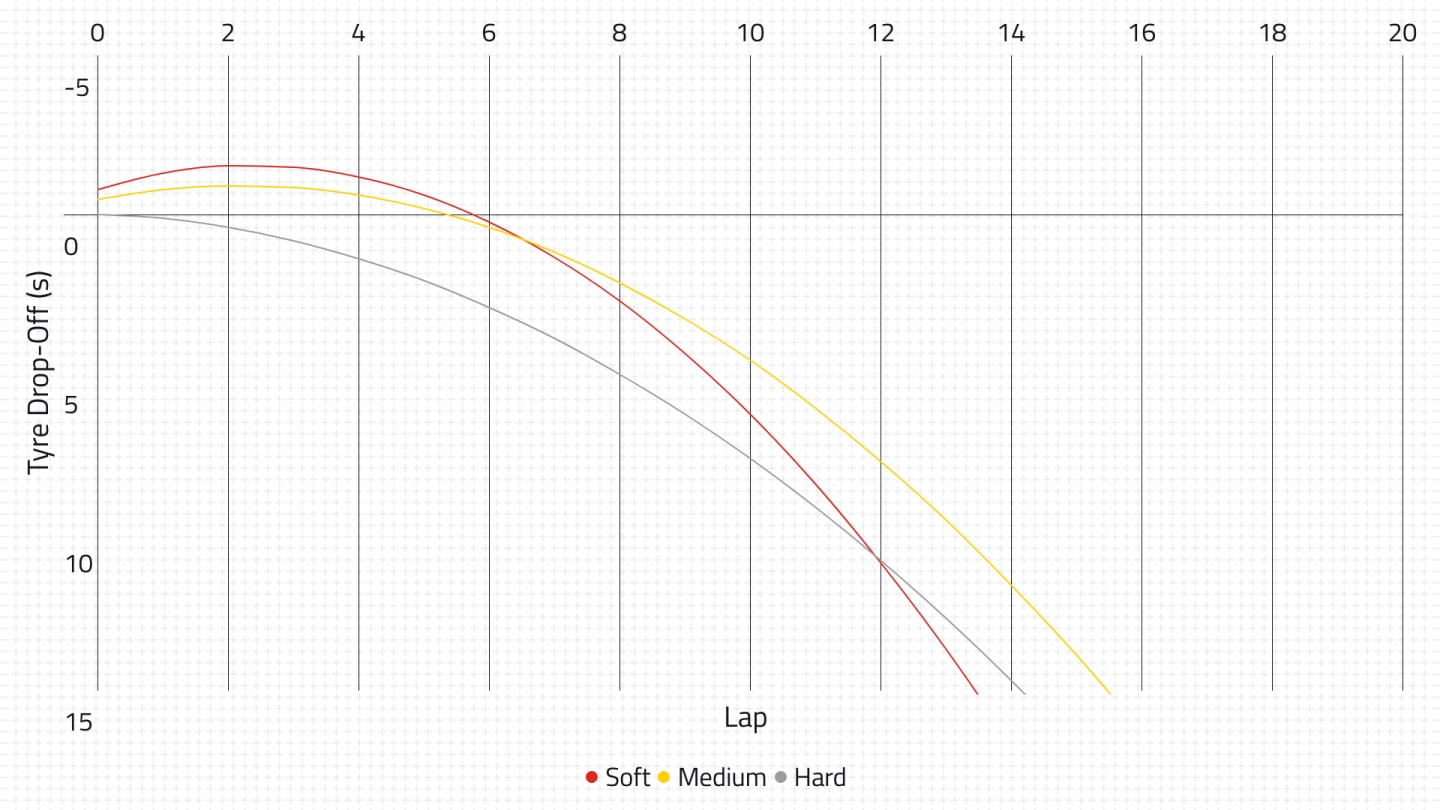
The soft tyre performance drop off is starker than with the medium, as you'd expect
For the four drivers starting on mediums, the ideal strategy will see them run for around 18 laps on that tyre, before switching to hards for a middle stint of more than 20 laps, and then returning to the mediums for the final 18-lap run to the flag.
Some drivers might shorten that middle stint to go for a longer final one as the fuel burns off and track temperatures drop, because they will also be likely to try and undercut another car by pitting earlier and having fresh rubber to use.
How about the rest of the top 10?
As you may have been able to work out from the first strategic option, the soft compound is not the preferred race tyre in Bahrain. But for six drivers – Charles Leclerc in fourth, plus Daniel Ricciardo, Lando Norris, Carlos Sainz, Fernando Alonso and Lance Stroll from sixth to 10th – that is the rubber they will have to start on.
In order to try and get into a similar situation to those starting on mediums, the likely preferred option will be to run as close to 15 laps as possible on the softs, then switch to hards for a long middle stint of around 25 laps and then finish the race on the mediums. In this case, the difficult part is keeping a competitive pace as the softs start to deteriorate on high fuel in the warmest temperatures, and then managing the hards early on to not be left struggling late in the race.
It’s also possible to attempt the latter two stints all on medium tyres, but that requires an even more challenging first stint on softs before nursing both sets of mediums for more than 20 laps – which is why the hard compound is likely to be preferred in the middle part of the race.
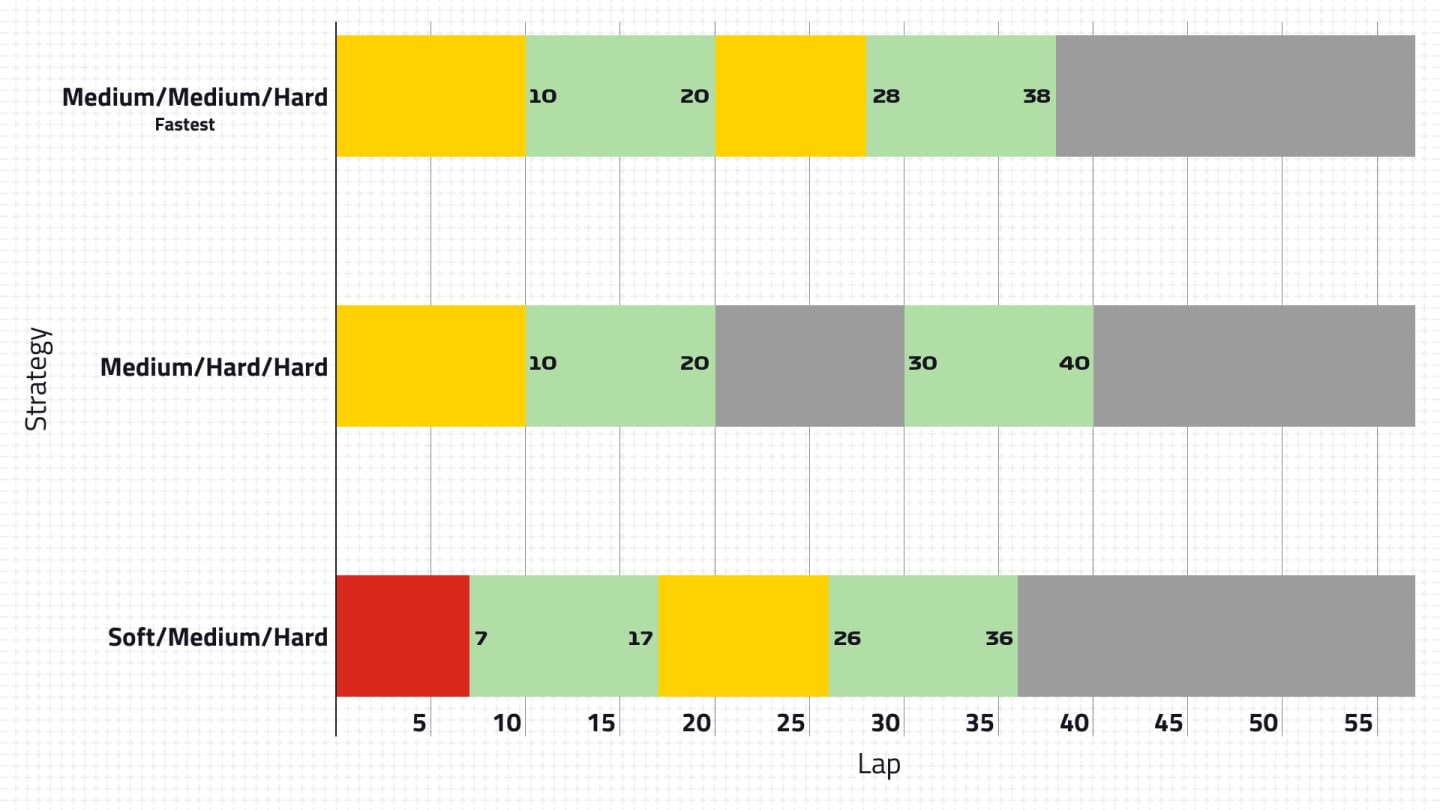
Possible race strategies, with pit stop windows (in green)
What are the options for the bottom half of the field?
For those starting 11th downwards, there’s a free choice of tyre compounds and many factors to take into account. One of those is the fact that there is a statistically higher chance of Safety Car periods in the first race of the season – due to both incidents and early reliability issues – that can open up opportunities to make major gains.
While the medium is the preferred tyre to start on at the front of the field, those further back won’t have the luxury of clear air. Starting on brand new softs (as opposed to the ones used in Q2 by the rest of the top 10) might allow a slightly longer first stint and some progress, especially if it allows a driver to be more attacking. For example, Yuki Tsunoda was much happier on the soft compound than the medium in qualifying, and could adopt the other two-stop strategy of soft-hard-soft, aiming for at least 25 laps on the hardest compound.
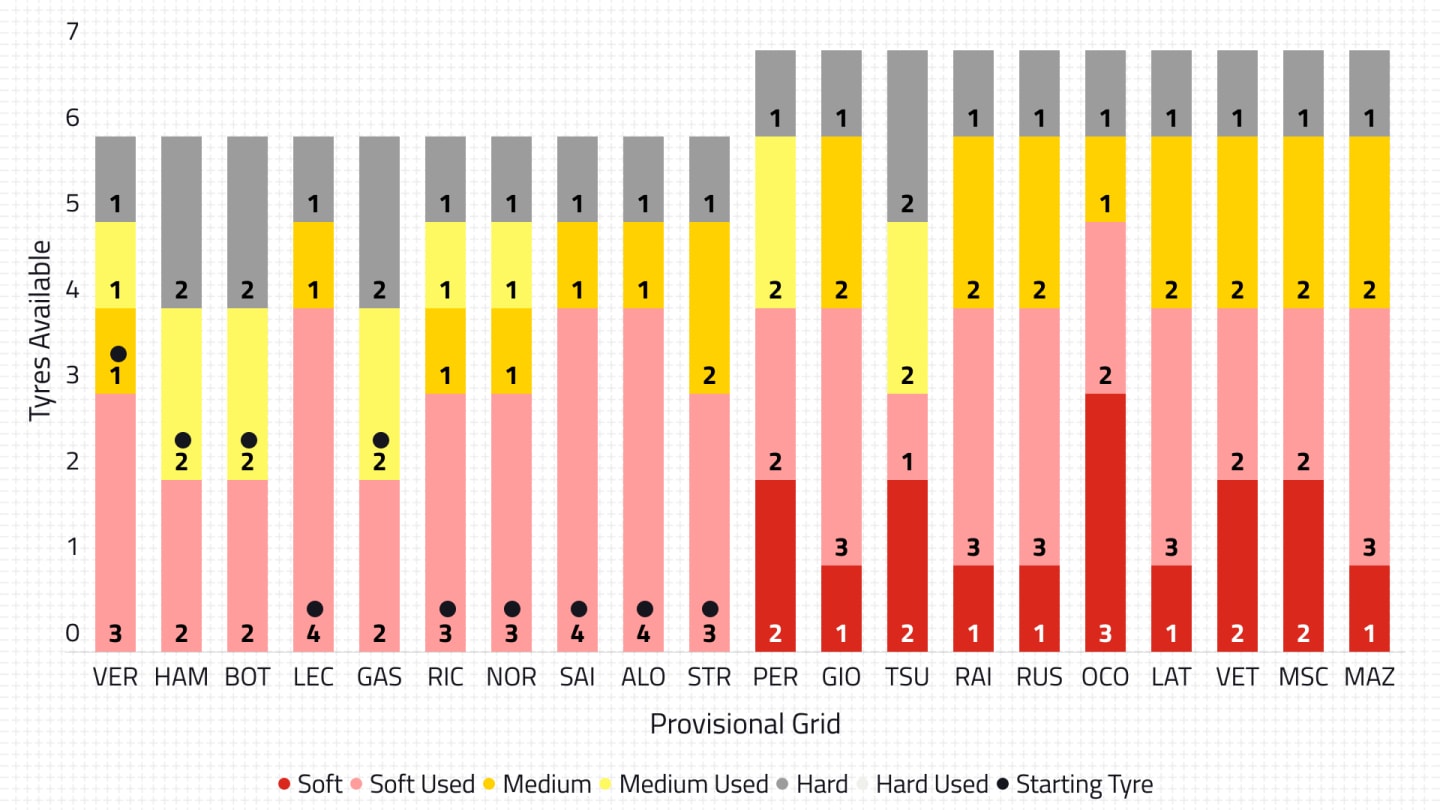
The tyres still available to each driver
But an opening stint on the hard compound could prove even more beneficial. By running long in the first stint and hoping for an incident, then a first pit stop to switch to mediums under either the Virtual Safety Car or Safety Car could prove very lucrative. Given the interruptions and red flags seen here at the end of last season, that alternative strategy will certainly come into consideration.
What’s the weather going to do?
The forecast is for cooler conditions in the race than we’ve seen throughout the weekend so far, but with strong gusts of wind. That places less of an emphasis on the rear tyres overheating, and more on overall tyre degradation.
HIGHLIGHTS: See all the action from the first qualifying session of 2021 in Bahrain
All of the two-stop options are relatively close in overall race time, meaning there could well be last-minute changes made by teams in order to try something different compared to whoever they’re racing.
YOU MIGHT ALSO LIKE
TechnicalF1 Unlocked TECH WEEKLY: Why a crucial Haas issue forced them to hastily modify their floor for Japan
News Ayumu Iwasa set to drive Verstappen’s Red Bull in FP1 at Bahrain Grand Prix
FeatureF1 Unlocked ICYMI: Incredible fans, Russell's iconic pose in miniature and an incredible hair style – it’s the best social media from Japan
FeatureF1 Unlocked THIS WEEK IN F1: 10 tough quiz questions on the Japanese Grand Prix





